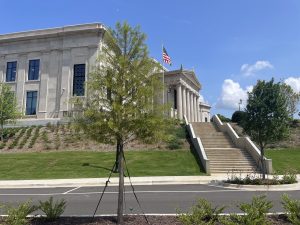Why use native plants in urban landscapes?
Published on July 22, 2025

![]() Today’s urban landscaping trends emphasize sustainability, ecological value, low-maintenance beauty and community involvement. Public support for native plants and wildlife-friendly green spaces is growing—thanks in large part to a better-informed community that understands how these landscapes help reduce habitat fragmentation.
Today’s urban landscaping trends emphasize sustainability, ecological value, low-maintenance beauty and community involvement. Public support for native plants and wildlife-friendly green spaces is growing—thanks in large part to a better-informed community that understands how these landscapes help reduce habitat fragmentation.
All plants contribute to healthier urban environments. They cool our cities by reducing heat islands, manage stormwater by minimizing runoff and improve air quality by absorbing pollutants. These benefits are enhanced by native plants.
North Alabama native species have evolved and are well-suited to prosper in local conditions. They typically require less water as well as fewer fertilizers and pesticides. More importantly, they support essential native wildlife — birds, bees, butterflies, and beneficial insects that keep ecosystems balanced and thriving.
In Huntsville, you can see examples of native plantings along Lowe Avenue near the federal courthouse, where coreopsis, purple coneflower, switchgrass, and mountain mint flourish. At Legacy Park, native grass with deep root systems absorb up to 10 times more water than a traditional lawn—helping prevent erosion and flooding.
This shift toward native landscapes replaces the old “green meatball” look of overly manicured shrubs with vibrant, functional plantings.
To maximize the benefits, allow plants to complete their full life cycle. Don’t cut them back until seeds have matured and birds have had a chance to feed. Before reaching for insecticides, take a closer look. The caterpillar nibbling on leaves today may be the butterfly you’ve been hoping to see tomorrow.
